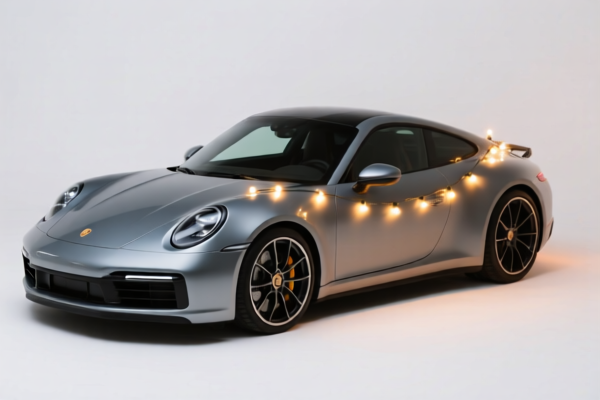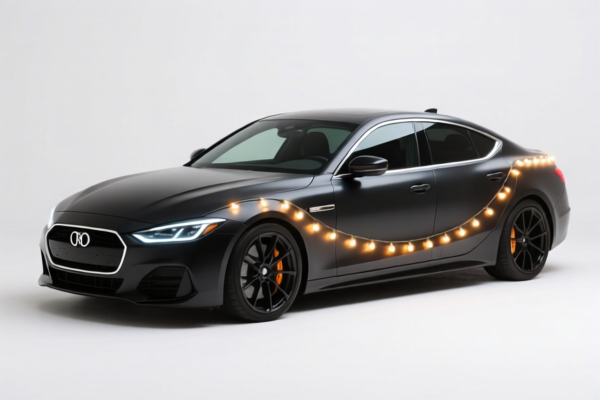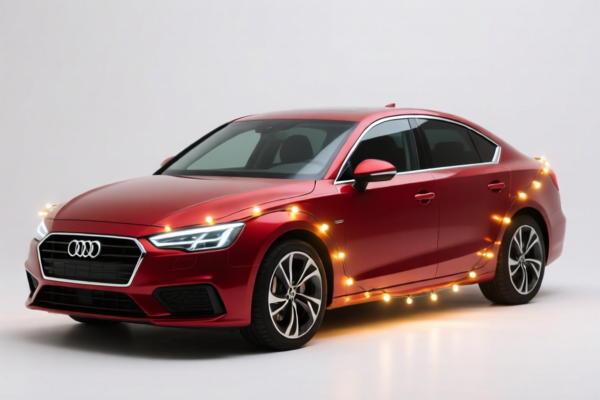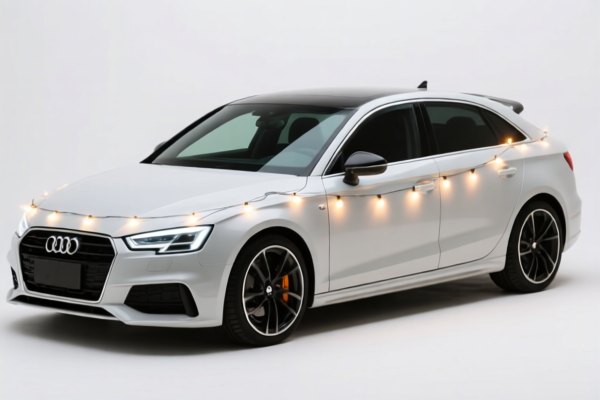| HS Code | Official Doc | Tariff Rate | Origin | Destination | Effective Date |
|---|---|---|---|---|---|
| 8428900390 | Doc | 55.0% | CN | US | 2025-05-12 |
| 8479899560 | Doc | 32.5% | CN | US | 2025-05-12 |
| 8512202040 | Doc | 55.0% | CN | US | 2025-05-12 |
| 8512202080 | Doc | 55.0% | CN | US | 2025-05-12 |
| 8539100010 | Doc | 57.0% | CN | US | 2025-05-12 |
| 8539520010 | Doc | 32.0% | CN | US | 2025-05-12 |
| 8513102000 | Doc | 42.5% | CN | US | 2025-05-12 |
| 8531809005 | Doc | 37.5% | CN | US | 2025-05-12 |
| 8531809005 | Doc | 37.5% | CN | US | 2025-05-12 |




Automobile Headlights
Automobile headlights are a crucial safety feature, illuminating the road ahead for drivers during periods of low visibility. They are legally mandated in most jurisdictions and have undergone significant technological advancements since their inception.
Materials
Historically, headlights utilized incandescent bulbs with tungsten filaments for light generation. Modern headlights increasingly employ more efficient technologies:
- Halogen: Still common, these bulbs contain halogen gas to improve brightness and lifespan compared to standard incandescent. Glass is used for the bulb envelope.
- Xenon (HID - High-Intensity Discharge): These bulbs produce light by passing an arc of electricity through xenon gas. They require a ballast to regulate the current. Typically housed within a glass or quartz enclosure.
- LED (Light-Emitting Diode): Highly efficient and long-lasting, LEDs are becoming increasingly prevalent. They utilize semiconductor materials.
- Laser: Emerging technology offering extremely long range illumination, utilizing semiconductor diodes.
Reflectors and lenses are typically made from polycarbonate plastic or glass, often with coatings to optimize light distribution. Housing materials are commonly plastic or aluminum.
Purpose
The primary purpose of headlights is to provide visibility to the driver and other road users during:
- Night driving: The most obvious application.
- Low-light conditions: Dawn, dusk, overcast weather, fog, rain, snow.
- Reduced visibility: Smoke, dust, or other atmospheric conditions.
- Signaling: Headlights are used to indicate presence and intentions to other drivers.
Function
Headlights function by:
- Generating light: The light source (bulb, LED, laser) produces a beam of light.
- Focusing and directing light: A reflector behind the light source concentrates the light into a directed beam. Lenses further shape and focus the beam.
- Distributing light: The beam is distributed to illuminate the road ahead, as well as provide some peripheral vision.
- Controlling beam pattern: Different headlight designs create specific beam patterns optimized for low beams (for general driving) and high beams (for maximum distance).
Usage Scenarios
- Low Beam Headlights: Used for normal nighttime driving when other vehicles are present. They provide adequate illumination without blinding oncoming traffic.
- High Beam Headlights: Used on open roads without oncoming traffic to maximize visibility over long distances. Drivers are required to dim high beams when approaching other vehicles.
- Fog Lights: Lower-mounted lights designed to illuminate the road surface in foggy conditions. They have a wider, lower beam pattern to minimize glare.
- Daytime Running Lights (DRL): Lights that automatically activate when the vehicle is running, increasing visibility to other drivers during daylight hours.
- Adaptive Headlights: Headlights that swivel in the direction of steering, improving visibility around curves.
- Automatic High Beams: Systems that automatically switch between high and low beams based on the presence of other vehicles.
Common Types
- Sealed Beam Headlights: Older technology, featuring a single, sealed unit containing the bulb, reflector, and lens.
- Composite Headlights: More common now, utilizing separate bulbs, reflectors, and lenses, allowing for greater design flexibility.
- Projector Headlights: Utilize a projector lens to focus the light into a concentrated beam, providing a sharper and more defined light pattern.
- LED Headlights: Increasingly popular due to their efficiency, brightness, and long lifespan. Available in various designs, including single-element and multi-element arrays.
- Laser Headlights: Emerging technology offering extremely long range illumination. Currently found in select high-end vehicles.
Automobile headlights are electrical lighting or signaling equipment used on vehicles. Determining the correct HS code requires considering the specific type and function of the headlight. Here are several potentially relevant HS codes based on the provided information:
- 8512202040: Electrical lighting or signaling equipment; windshield wipers, defrosters and demisters, of a kind used for cycles or motor vehicles; parts thereof: Other lighting or visual signaling equipment: Lighting equipment For vehicles of subheading 8701.21, 8701.22, 8701.23, 8701.24 or 8701.29 or heading 8702, 8703, 8704, 8705 or 8711. This code covers lighting equipment specifically designed for certain vehicle types (subheadings 8701.21-8701.29 and headings 8702-8705, 8711). The total tax rate is 55.0%.
- 8512202080: Electrical lighting or signaling equipment; windshield wipers, defrosters and demisters, of a kind used for cycles or motor vehicles; parts thereof: Other lighting or visual signaling equipment: Lighting equipment Other. This is a broader category for lighting equipment not specifically covered by 8512202040. The total tax rate is 55.0%.
- 8539100010: Electrical filament or discharge lamps, including sealed beam lamp units and ultraviolet or infrared lamps; arc lamps; light-emitting diode (LED) light sources; parts thereof: Sealed beam lamp units Under
15.24 cm: For vehicles of subheading 8701.21, 8701.22, 8701.23, 8701.24 or 8701.29 or heading 8702, 8703, 8704, 8705 or 8711. This code applies to sealed beam lamp units used on specific vehicle types, with a total tax rate of 57.0%. - 8539520010: Electrical filament or discharge lamps, including sealed beam lamp units and ultraviolet or infrared lamps; arc lamps; light-emitting diode (LED) light sources; parts thereof: Light-emitting diode (LED) light sources: Light-emitting diode (LED) lamps Of a type specified in statistical note 7(a) to this chapter. This code is for LED lamps meeting specific statistical note 7(a) requirements, with a total tax rate of 32.0%.
- 8513102000: Portable electric lamps designed to function by their own source of energy (for example, dry batteries, storage batteries, magnetos), other than lighting equipment of heading 8512; parts thereof: Lamps: Flashlights (While not a perfect match, headlights are lamps and could potentially fall under this if not considered 'lighting equipment of motor vehicles'.) This code applies to portable electric lamps, including flashlights, and may be applicable if the headlights are not classified as 'lighting equipment of motor vehicles'. The total tax rate is 42.5%.
Important Considerations:
- The classification between 8512.20.20.40 and 8512.20.20.80 depends on whether the headlights are specifically designed for the vehicle subheadings/headings listed.
- If the headlights utilize LED technology, 8539.52.00.10 may be applicable, provided they meet the requirements of statistical note 7(a).
- If the headlights function independently with their own power source (e.g., battery-operated), 8513.10.20.00 could be considered, but this depends on whether they are classified as 'lighting equipment of motor vehicles'.
- Regarding HS code 8513102000, please note that the description states headlights could potentially fall under this if not considered 'lighting equipment of motor vehicles'. This requires careful assessment of the product's function and intended use.
Customer Reviews
No reviews yet.